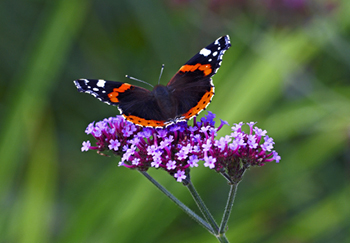Choosing Great Plants for Pollinators in the Garden
December 23rd, 2021 | Categories
If you’d like to attract more life to your garden, then planting for pollinators is a great way to do it. Our pollinator populations are in decline because of habitat loss due to urbanisation and widespread pesticide and herbicide use, mainly down to agricultural farming. So, our gardens can be a place where we can give them all the nectar and pollen they need to thrive, fly and nest. Pollinators are extremely important to our eco-system and they’re also lovely to see in our gardens so whatever we can do to help them we should. By growing a mixture of flowering plants in our gardens – pots and containers work just as well too – we can provide a wealth of nectar and pollen for all our native pollinators. They’ll really appreciate it and will in turn keep your garden lush and healthy.
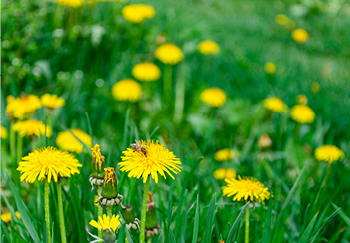
Why are Pollinators Important?
Pollinators are extremely important to our eco-system because they are vital to having a healthy environment and healthy economy. If we don’t protect them, it will have serious implications for our biodiversity, our crops and food production, and even decorative ornamental plants that we love will disappear. Most plants we need for food rely on pollination, especially by bees. Without them we wouldn’t have any food on our plates, nor would we have wild plants that support so much other wildlife. As the pollinators go on to travel from flower to flower, they also pollinate them, enabling them to produce seeds or fruit.
Bees also pollinate about 80% of all wildflowers in Europe, so imagine that were to drop significantly; our countryside would be a far less interesting and beautiful place. That would be a real shame. Besides pollination, they recycle dead leaves, dung, animal corpses, control pests, help keep the soil healthy, and are food for many birds, and other small mammals. Our gardens can protect and foster not just pollinators but a whole manner of wildlife so long as we give them what they need to live and thrive. For the pollinators, this is an abundance of nectar and pollen, and nesting areas.
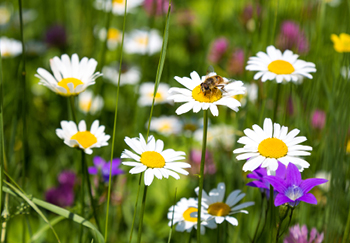
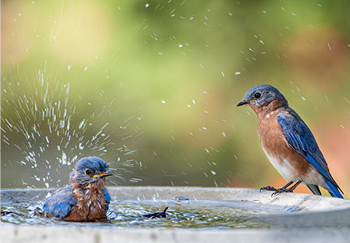
What Pollinators do we have in the UK?
You may be thinking what exactly pollinators are. The word ‘pollinators’ is a collective term for the following insects:
Bees
Bees are the heavyweights of pollination. More than 90% of the leading global crop types are visited by bees. Bees collectively refer to Bumblebees, Honeybees, and Solitary Bees. There are many species of each in Britain. When bees collect pollen and nectar from flowers, pollen from the male reproductive organ of the flower sticks to the hairs of the bee’s bodies. When the bees visit the next flower, some of this pollen is rubs off onto the female reproductive organ of the flower.
Butterflies
Butterflies typically fly longer distances than bees, covering large areas of plants in a single trip. Monarch Butterflies, the largest in Britain, are known to travel 50 – 100 miles in a single day. Butterflies gather pollen and when they land on a flower to drink nectar. They are unable to collect as much pollen as bees, meaning they are not as prolific as bees at pollination, but they are known to aid more in the genetic variation of plant species that they collect nectar from, largely thanks to their long-distance travel. It means that pollen will be shared across differing groups of plants that are sometimes hundreds of miles away from one another.
Moths
Moths are related to butterflies and there are thousands of species, unlike the butterfly of which there’s less than 60. Moths also help in pollination and being nocturnal would be classed as the ‘nightshift’ of the pollinators. They have furry bodies which gathers up pollen when they land on plants and flowers and transport it around as they go. New research suggests moths do a lot more pollinating than first believed and visit many more species of flower than even some bee species would.
Beetles
Beetles – and only beetles that feed on nectar and pollen – cannot gather up pollen in the way that bees, butterflies, and moths can. However, they can gather up some pollen and debris on their bodes as they move from flower to flower so do help with pollination albeit in a smaller way.
Hoverflies and other Flies
These guys are the unsung heroes of pollination. There are thousands of hoverfly species, all helping to pollinate, some look like wasps yet they don’t sting or bite, and their larvae eat garden pests including aphids and small caterpillars making them beneficial to have around your garden. They are similar to beetles in that they are incidental pollinators, just gathering and transporting some as they go about their business.
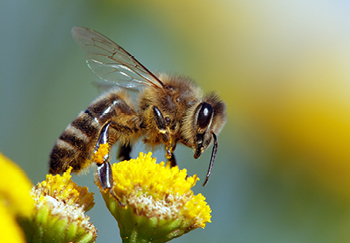
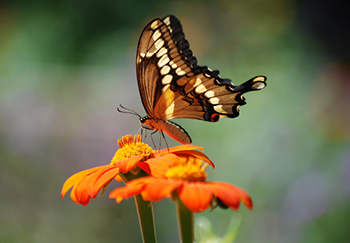
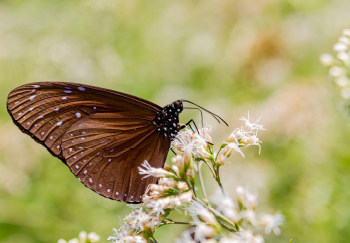
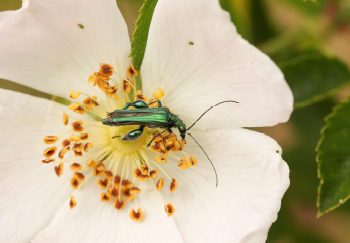
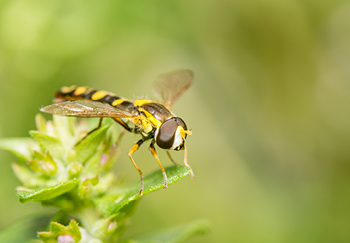
Plants that help Pollinators
Now that you know a lot more about pollinators here are 15 plants that help them providing them with a good source of food for years to come.
Lavender
Pollinators. Love. Lavender. Especially bees. It’s like a magnet for them. This is because lavender has both pollen and nectar they can feed on in a single plant, usually in plentiful amounts. It’s also good for us too, being an attractive plant and possessing a lovely scent that calms us down. It’s also one of the most versatile plants around and will do well in the ground, in pots, flowerbeds and nearly anywhere you’d want to include it.
Foxgloves
Like lavender, foxgloves are great for bees, especially bumblebees, which they have evolved to attract. The tubular flowers make it simple for bees to land on to gather nectar and the plant itself provides lots of flowers over its long stems. They do OK in pots but will do better when planted in the ground.
Verbena
Verbenas are great for attracting bees, birds, butterflies, moths and other pollinators because of their nectar/pollen rich flowers. Plant them tightly in your flower beds for a wonderful lasting floral display.
Lupins
Lupins don’t have much in the way of nectar but do have lots of pollen for bees. It is a bright, colourful flower that the bees love with bonus of interest for you with its unique spikes of flowers in a variety of colours. Lupins will do equally well in the ground or a nice large container.
Fuchsia
Pollinators, especially bees, also love fuchsias. With a lot of nectar, bees and butterflies will be very attracted to these plants. They also bloom abundantly, and their lovely unique teardrop shaped flowers add wonderful interest to any garden.
Dianthus
The hot pinks of the dianthus flower attract many pollinators to their bounty of nectar and pollen. Dianthuses are wonderfully flagrant and great for beds and borders. They will do well in pots and containers but are also great for hanging baskets, window boxes and rockeries too.
Ivy
Ivy is a great low-maintenance plant that is very good for pollinators. The clusters of flowers that appear on ivy attract all manner of insects and the little berries that appear afterwards act as a valuable winter food source for insects and birds too. It is often overlooked but more and more it is seen as a great option for wildlife in British gardens. Ivy has suckers so it will happily grow up a wall or fence eventually on its own but will also equally cover the ground.
Sunflower
The humble sunflower is a honeybee’s dream, but other bees and pollinators will visit them too. The brightly covered petals attract them to the flower where they then get covered in pollen transporting it as they go on their business to other flowers.
Heather
Flowering heathers are not only wonderful to gaze upon, but they are also loved by pollinators. Flowering heathers are a great source of winter food for pollinators. It has been discovered that heathers may even act as a medicinal plant for bees helping them to fend off parasites. Heathers Flowering heathers are not only wonderful to gaze upon, but they are also loved by pollinators. Flowering heathers are a great source of winter food for pollinators. It has been discovered that heathers may even act as a medicinal plant for bees helping them to fend off parasites. Heathers generally, are under threat, with many heathlands across Britain now gone due to agriculture. So, planting some heathers will not only help the pollinators, but the heather itself. Plus, they look amazing in winter when everything else has died off.
Primrose
Primroses are an excellent source of nectar for all pollinators more so those with long mouth parts like bees, moths and butterflies. Primroses have great variation of colours from deep yellow to almost white or even pink so you can brighten up the garden easily with these lovely little flowers. Plant them under shrubs or trees for a woodland effect. They’ll also do well in containers.
Geranium
Geraniums produce nectar and pollen, and most varieties are popular with pollinators. Geraniums are great because they are hardy, low-maintenance, and great for planting in gaps in borders.
Dahlia
Dahlias are great because they offer us wonderful blooms of lovely colourful flowers, and they offer pollinators lots of nectar and pollen. Win win. They come in a variety of types and double-flowered and single-flowered forms. The single-flowered types are more accessible to pollinators, however. They are particularly good for providing a late source of nectar in the year.
Azaleas
Azaleas offer up large amounts of sugar-rich nectar to pollinators, so they absolutely love them, especially bees and butterflies. They are a hardy shrub too, providing year-round interest for the garden with their vibrant flowers. Azaleas do equally well in the ground and in containers.
Pulmonaria
Ivy is a great low-maintenance plant that is very good for Pulmonaria are semi-evergreen plants with lovely, dainty, little flowers that are an excellent ePulmonaria are semi-evergreen plants with lovely, dainty, little flowers that are an excellent early source of nectar for bees. The flowers are a lovely pinkish blue and will help to add interest to your garden too. They don’t like full sun though – this will make them wilt and look poorly – so best placed in shadier areas.
Anemones
Anemones are great for pollinators especially bees. The open flower creates an easy landing pad for them to get on and gather pollen and nectar. The plants are a great addition for them as they provide lots of pollen and are a lovely and colourful addition to any garden.
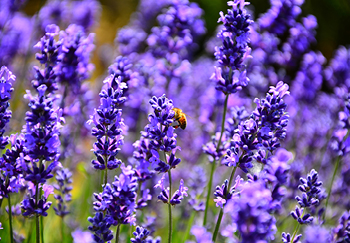
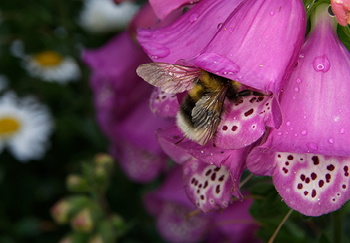
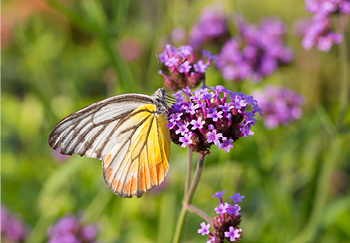
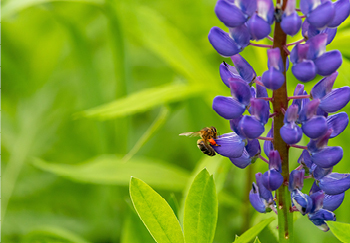
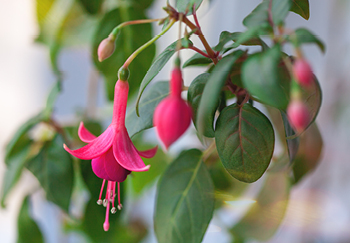
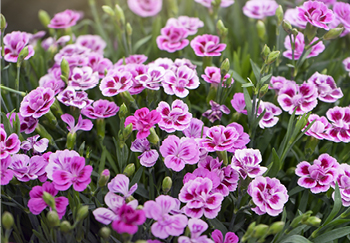
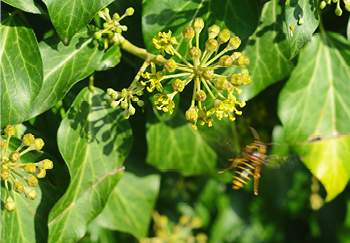
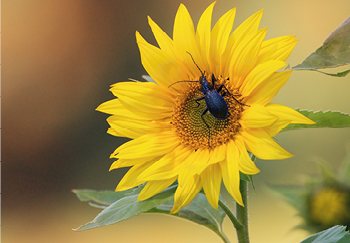
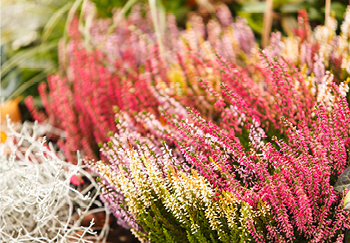
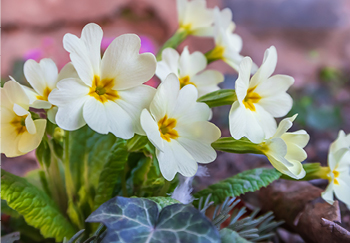
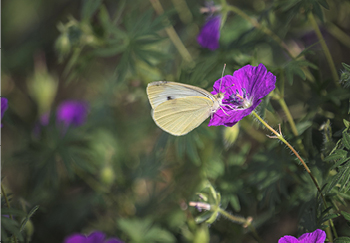
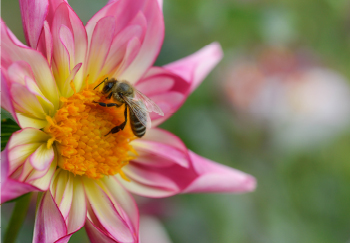
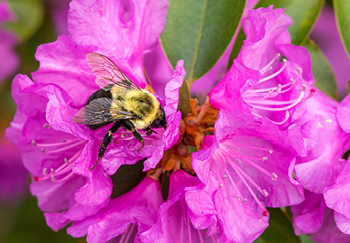
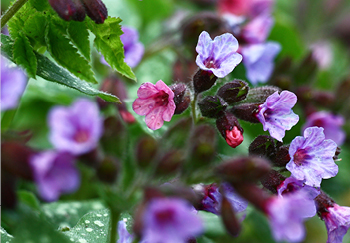
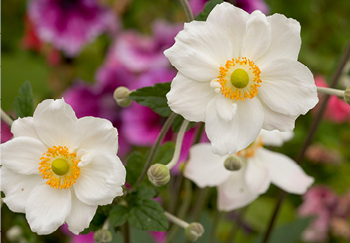
Other ways to help Pollinators
In addition to the plants above, there are some other ways we can help pollinators too.
Let the Grass Grow Wild
Allow your lawn and lawn weeds to flower by cutting less often. You don’t have to do this in the entire garden, perhaps just a few square metres if you have the space. Leaving patches of grass to grow wild will let wildflowers grow and in turn these make great nesting and feeding sites.
Water Sources
Pollinators need sources of water for drinking and reproduction. Shallow and broad sources are better than those that are narrow and deep. If the latter, many pollinators are in danger of drowning in them. Adding sources of water is as easy as adding a bird bath or a puddling area for butterflies. You can also provide water by hanging a dripping bottle or placing a small container of water out in the open.
Use more Organic Pesticides & Pest Control
If you need to use pesticides, can you use them sparingly or even make the switch to organic pesticides? Organic pest control methods include the use of neem oil, garlic/oil spray, soapy water, copper, salt and cedar oil, all of which are completely safe for humans, animals, as well as the environment. You can also ensure you keep the soil healthy, as any plants that suffer from poor soil conditions from too long can become poorly, and poorly/sick plants attract pests. Another method to help control pests is companion planting, for instance nasturtium attracts aphids from other plants. Many types of herbs are also good companion plants, as their strong scents act as a deterrent to pests. Lavender itself is also believed to be a deterrent of certain pests do to its strong scent.
Provide Shelter
Pollinators love long grassy patches, exposed soil, hedges, trees, dead wood, bark, and compost heaps, to highlight some places where they would take shelter. You can really help by developing one or two of these areas in your garden, like a corner with lots of dead wood and leaves, or a few patches of grass left to grow long. Consider a bee hotel for solitary bees and avoid disturbing or destroying any pollinators already living and nesting around the garden.

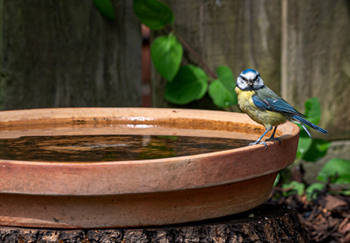

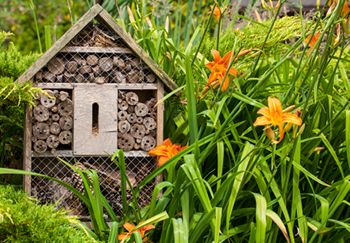
Let’s Turn our Gardens into Pollinator Havens
Now you know more about pollinators and what we can do to help them, by planting flowers they love, and making their lives a bit easier in our gardens, why not start thinking about what you can plant and what areas you can create for them? Our gardens cover nearly half a million hectares of land in Britain. This an area greater than all of our nature reserves combined. The potential this holds for our pollinators and wildlife are astounding. If we made most of our garden’s pollinator friendly, with plenty of pollinator-friendly plants, and areas where they can drink, nest and shelter then they wouldn’t face any decline. All it takes it just one step so why not start with some plants they’ll love?
